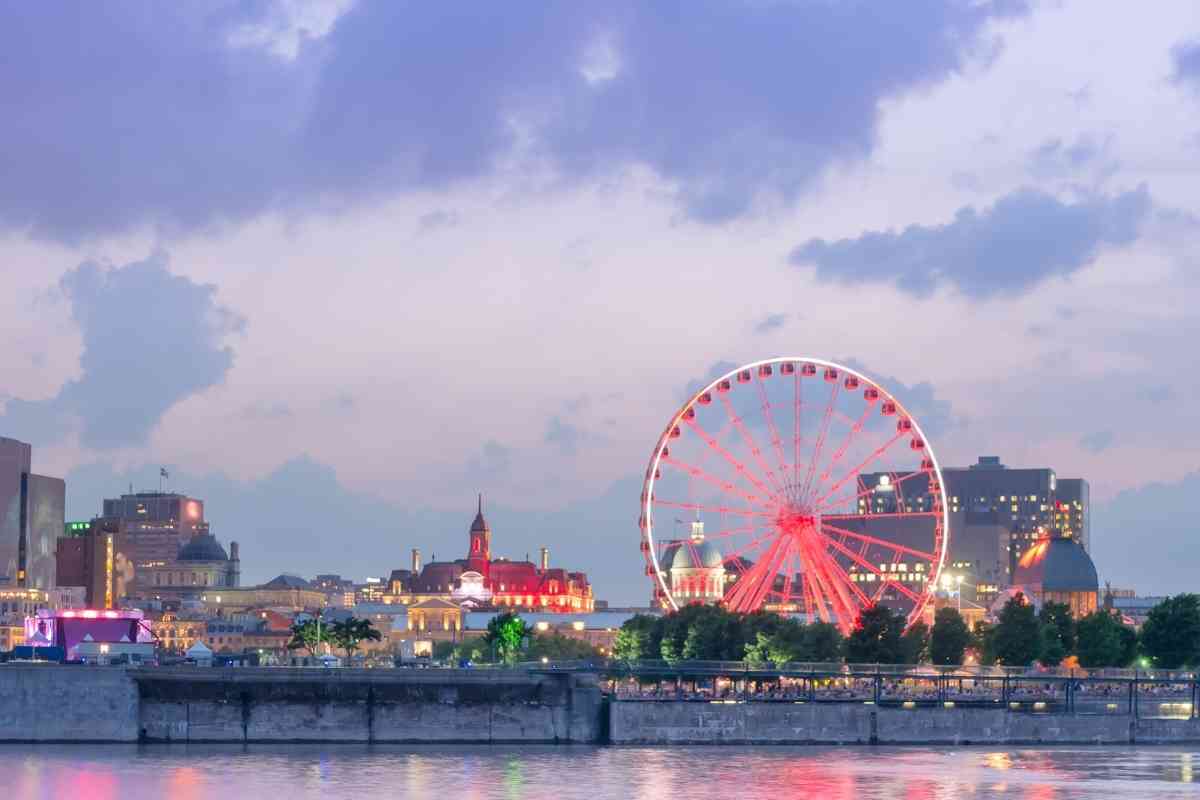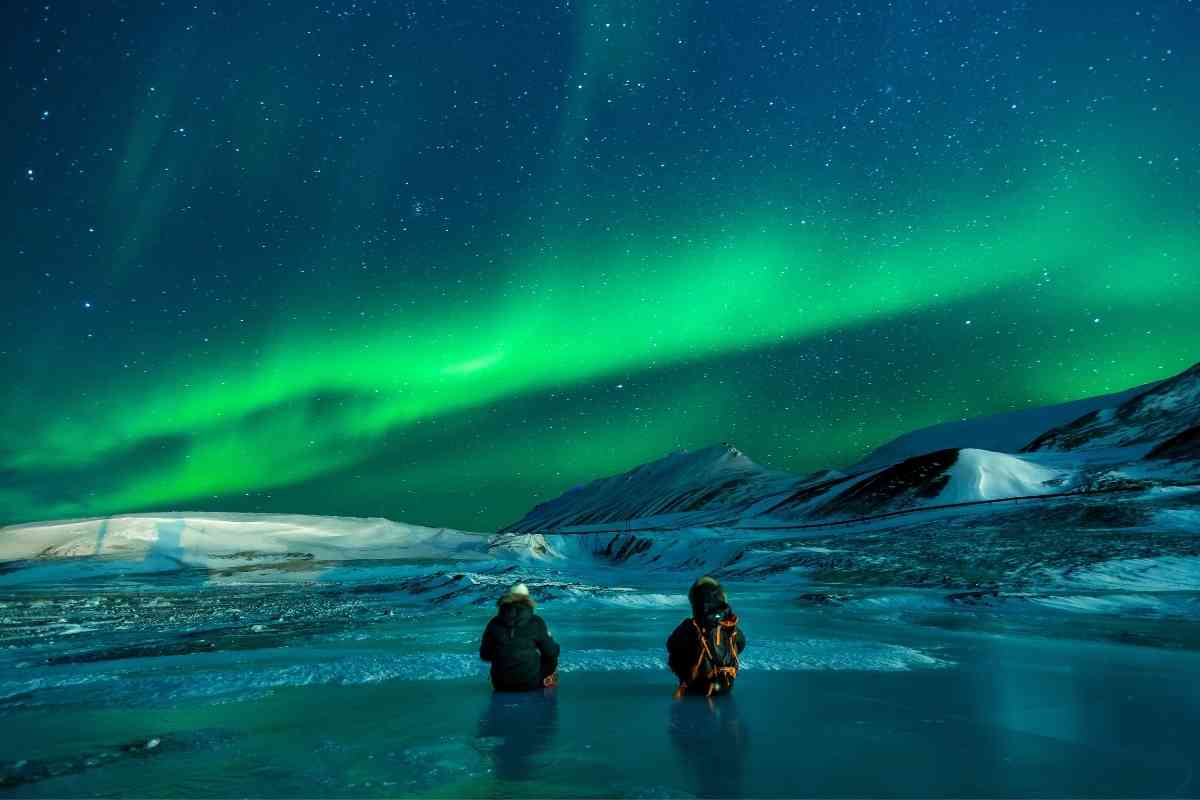9 Reasons Why Canada Is Worth Visiting
As the second-largest country on the planet, Canada has a lot to offer.
From the untouched wilderness of mountains and lakes to the bustling metropolitan cities rich with history, the Great White North is a fascinating destination for all types of travelers.
Is Canada worth visiting?
Canada is a massive and diverse country that offers something for every traveler. Canada is home to some of the world’s largest cosmopolitan cities as well stunning natural features and unique wildlife. It’s an extremely safe, clean, and forward-thinking western country.
Hiking, skiing, zip lining, polar bear-watching – you name it, Canada has it.
City dwellers will also love exploring the cultural scene of gastronomic restaurants, world-class museums, and multicultural festivals.
While there are hundreds of reasons to visit Canada, we compiled nine of our favorites. Read on to find out why Canada should be on your list of places to visit!
Its Cosmopolitan Cities

From the east coast to the west, Canada is dotted with modern, metropolitan cities.
However, each one is unique, with its own culture, landscape, and history.
One of the most popular Canadian cities is Toronto.
It’s the largest city in the country, with nearly 6 million residents (half of which are non-Caucasian, which speaks to its colorfully diverse atmosphere).
Many compare Toronto to New York, with a seemingly endless number of theaters, museums, festivals, markets, and shopping centers.
Montreal is Canada’s second-largest city.
Located in the French-speaking province of Quebec, Montreal has an old-world European feel to it.
Between the century-old buildings, terraced cafes, and modern museums and galleries, it’s easy to see why it was named a UNESCO City of Design.
If you’re on the west coast, then Vancouver, British Columbia is a must-see. Surrounded by water, mountains, and forest, this green city is one of the most livable cities in the country. But even if you don’t venture into nature, you can still explore the many boutique shops, international restaurants, and cultural venues in the city.
Its Outdoor Activities
You can’t visit Canada without doing some sort of outdoor recreation.
Despite being the second-largest country in the world, it’s one of the most sparsely populated, which means there is plenty of nature to explore.
If you need a bit of fresh mountain air, head to the Canadian Rockies.
This landscape of alpine lakes and snow-capped peaks attracts all types of outdoor enthusiasts.
Banff National Park in Alberta is a highlight, with plenty of opportunities for skiing, cycling, hiking, and wildlife viewing.
British Columbia is the best destination for whale watching, especially around Telegraph Cove or Port McNeill on the Johnstone Strait.
You can also see humpbacks on the North Atlantic side in Newfoundland & Labrador.
Backcountry canoeing is one of the country’s most beloved sports.
Paddle down the Thelon River in the Northwest Territories, admire the Cariboo Mountains from one of the Bowron Lakes in BC or tackle the wild rapids of Churchill River in Saskatchewan.
For something more off-the-beaten-path, visit the remote territory of Nunavut.
Located in the Canadian Arctic Archipelago, this region is best for hunting, fishing, dog sledding, kayaking, and polar bear watching.
Its Wildlife

Home to over 80,000 unique species of animals, Canada is a wonderland for wildlife enthusiasts.
Whether you’re exploring the forests of British Columbia to kayaking through the Arctic Archipelago in the north, you’ll have no problem spotting a few wild creatures during your visit.
In the Great Lakes area, black bears, striped skunks, timber wolves, and moose roam through the woods.
Mountain goats, bighorn sheep, and elk are also common in the Rocky Mountains.
In the artic, you’ll find polar bears, reindeer, and white and blue foxes scurrying around the glaciers.
Marine life in Canada is also diverse and abundant.
Killer whales migrate past the Inside Passage, while belugas, blue whales, and humpbacks are more common in the Atlantic.
Other sea life includes dolphins, seals, sea turtles, sharks, and over 1,200 types of fish.
However, more than 800 species are considered at-risk, threatened, or endangered.
For this reason, over 12% of the country is considered a conservation or protected area.
This also includes 13.8% of the ocean around Canada.
Its French Heritage
French is an official language of Canada, although you won’t find the majority of the population speaking it unless you visit Quebec.
This territory is unlike anywhere else in the country.
It has a distinctly European flair with winding cobblestone streets, Parisian-like architecture, and gourmet restaurants and cafes.
Quebec was founded by French settlers in the 1600s.
It was then handed over to the Brits in the 18th century before becoming a Canadian province in the mid-1800s.
Since then, Québécois culture has been heavily influenced by the French, British, and indigenous First Nations, although it has evolved to develop its own unique traits as well.
Two of the main cities to experience Québécois culture are Montreal and Quebec City.
Montreal is the second largest city in the country, although its modern high-rises and cosmopolitan attitude is complimented by French-style cafes, restaurants, and festivals.
Quebec City is smaller, with a stronger French vibe.
The city is dominated by classic European architecture (just take a look at the Château Frontenac hotel and the Citadelle of Quebec).
You can also wander the streets of Old Quebec, a UNESCO World Heritage Site known for its historic 17th and 18th-century buildings and charming streets and squares.
Its Diverse Culture
Multiculturalism is one of Canada’s most notable features.
Accepting and acknowledging all types of cultures is even part of Canadian policy.
The Canadian Multiculturalism Act of 1988 states that the government should promote diverse cultures by recognizing different languages, customs, and religions.
Therefore, immigrants face less discrimination while also having a direct path to obtaining residency or citizenship.
Canada also has one of the highest immigration rates out of any country in the world.
Approximately 20% of residents were born outside the country, while 41% of residents are 1st or 2nd generation immigrants.
Most foreign-born immigrants come from India, China, and the Philippines.
Diversity in Canada isn’t just limited to heritage or ethnicity.
Other measures have been put in place to create a positive environment for all residents, regardless of sexual orientation, gender, abilities, or economic status.
This diverse blend of cultures can be felt everywhere in the country.
Newspapers are printed in different languages, international restaurants can be found on every corner, and minorities hold positions of power in government and business.
It’s One of the Best Places to See the Northern Lights

The Aurora Borealis is an unbelievable sight that very few people get to see in their lifetimes.
This celestial light show of colored waves is caused by an interaction between the solar wind and Earth’s magnetic field, which explains why it can only be seen near the Northern magnetic pole.
There are many places in Canada where you can witness this phenomenon for yourself.
The small town of Churchill in Manitoba sits right under the Aurora oval, which means you can see the light show approximately 300 days out of the year.
However, if you’re looking for somewhere less remote, you can generally see the lights in the Yukon or Northwest Territories.
The best time to see the Northern Lights is from October to March.
This is when the days are shorter and the night has more hours of darkness.
September and October have the highest amount of solar activity, which means the Borealis is at its most colorful.
However, December and January are also great times because the sky is at its darkest.
It’s Extremely Safe
Canada is a very safe country.
According to the Global Peace Index, it’s the 6th-safest place in the world.
This is largely due to political stability, low crime rates, and the ability to handle internal conflicts.
Crime rates are low, even in big cities like Toronto, Vancouver, or Montreal.
On average, the country only has 1.6 incidents per 100,000 people.
That’s 3x lower than the crime rate in the United States (4.5 incidents per 100,000 people).
Violence is rare (especially towards tourists and visitors) and is usually restricted to certain neighborhoods or areas.
In fact, the majority (57%) of all police-reported crime was non-violent.
Therefore, families, solo travelers, and women should all feel relatively comfortable traveling throughout Canada.
In addition to its high safety rating, Canada has a reputation for being friendly and welcoming.
People are generally accepting of foreigners, and many go out of their way to help weary travelers.
One survey even found that 90% of Canadians will apologize after bumping into you even if they weren’t at fault!
Its Sustainability Initiatives
Sustainability is a very important practice in Canada.
This applies to wildlife conservation, environmental protection, and even indigenous resource management.
For example, Canada recently placed 3rd for having the cleanest air quality in the world.
This is partially attributed to the low population density, although Canada also has strict regulations in terms of emission production.
Over the past few years, new policies have also been put in place to reduce climate change.
Although they are the 10th biggest producer of greenhouse gases, the country is committed to reducing its emission output by 30% by 2030.
Different provinces have also signed their own individual policies to reduce their carbon footprint, including the Greenhouse Gas Pollution Pricing Act and the Climate Change Accountability Act.
Growth and urbanization have also put the Canadian wilderness in jeopardy.
They have invested $2.3 billion to protect these threatened lands.
By 2025, they hope to conserve 25% of Canada’s land and ocean while also creating more jobs and supporting indigenous groups.
These measures will not only protect the flora and fauna, but also the well-being of every citizen that lives in the country.
It’s Gastronomic Cuisine
Canadian cuisine isn’t particularly famous.
After all, the melting pot of cultures means there are very few dishes that are explicitly “Canadian.” On the other hand, the food in Canada is influenced by many other countries.
Ingredients, methods of cooking, and preparation techniques have been shared by indigenous cultures as well as France, England, and America.
But that’s not to say there aren’t national specialties.
Bannock, poutine, peameal bacon, butter tarts, and maple syrup are all traditional dishes that can be found in different regions of the country.
But thanks to the abundance of natural resources, Canada has access to fresh fish, meat, and wild game.
You can have fresh scallops from Digby, Nova Scotia, organically raised beef from Alberta, or succulent duckling from Brome Lake, Quebec.
If you’re craving something particular, you can find it in one of Canada’s big cities.
Montreal, Quebec City, Ottawa, Vancouver, St. John’s, and Toronto are foodie cities where you can find almost every type of meal from almost every type of culture around the world.
From the local farmer’s market to the newest up and coming Michelin star restaurant, Canada is guaranteed to be a gastronomic delight for all taste palettes.
FAQ
What is the best time to go to Canada?
Each season in Canada is beautiful, so there’s really no wrong time to visit.
However, when you go will largely depend on where you’re going and what you plan on doing during your stay.
June to August is the warmest time of the year, although it can also be the busiest due to summer vacation.
Late spring and early fall are also good if you want to be outdoors. The weather is still warm, but it’s not uncomfortably hot, humid, or crowded.
Most travelers visit areas near the southern border.
But if you’re planning to venture up north, keep in mind that this area near the artic is always cold – even in summer.
How many days do I need in Canada?
Canada is a sprawling country, which makes it difficult to see more than one or two places at a time.
If you stick with one city or national park, you could probably see the biggest sites in three or four days.
However, you’re better off spending a week or more exploring if you don’t want to feel rushed.
Two weeks in Canada will allow you to tick off multiple cities or to even visit different provinces around the country.
